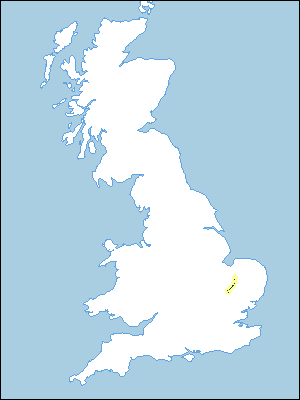
Soil Associations
0346 Reach
Soil and site characteristics
Shallow humose fine loamy calcareous soils over chalk or chalk rubble with groundwater controlled by ditches and pumps.
Geology
Chalk and chalky drift
Cropping and Land Use
Cereals and sugar beet.
Component soil series
| Subgroup | Series name | Percentage | WRB 2006 link |
|---|---|---|---|
| 3.46 | REACH | 25% | Epigleyic Rendzic Phaeozems |
| 8.72 | BLACKDYKE | 23% | Calcaric Mollic Gleysols |
| 3.45 | BURWELL | 15% | Calcaric Gleyic Endoleptic Regosols |
Covers 44 km2 in England and Wales
Soilscapes Classification
| 3 |
Shallow lime-rich soils over chalk or limestone |
0346 Reach
Detailed Description
The occurrence of chalky drift, sometimes over 1 m thick, varies within the association. The parcel of land near Feltwell at the foot of the relatively steep chalk slope is mostly free of this drift so here the Reach and Burwell soils predominate. Drift is more common in the larger and broader areas between Lakenheath and Cambridge where the adjacent chalk scarp is less marked. Here there is a higher proportion of Blackdyke soils as well as some Wilbraham soils, the latter humic gleyic rendzinas, like Reach series, but formed in chalky drift. Blackdyke and Wilbraham were mapped together as Wilbraham series in earlier work. Sporadic coarse loamy and sandy pockets occur within the drift so there are occasional small patches of Clayhythe and Islehamsoils, while Padney and Willingham soils are found by the streams. The western margins of the mapped areas in Cambridgeshire often include patches of restored coprolite workings too small to separate. Because of cultivation the proportion of non-humose to humose soils is gradually increasing.
Soil Water Regime
There is effective arterial pumped drainage so the soils are mainly well drained (Wetness Class I). The ground is often uneven, with hummock and hollow microrelief giving a metre height difference between crest and hollow, so the depth to the controlled water-table varies. Roots are only partly restricted by the underlying chalk which is at shallower depths on the ridges than in the hollows, and many crops are able to obtain water from the chalky material. Except for grass, the effects of summer drought do not seem to be serious on these soils.
Cropping and Land Use
The soils are easily cultivated with ample time for autumn and spring landwork. The less humose soils become sticky when very wet and tend to form a cap when dry which checks seedling emergence. The extremely high calcium carbonate content of most of the soils induces manganese deficiency in crops. Transitional between fenland and chalk, these soils are farmed in a similar manner to those of the adjoining chalkland.
0346 Reach
Distribution Map
 |
Note that the yellow shading represents a buffer to highlight the location of very small areas of the association.
Keys to component soil series
Eastern Region
 |
Typical Landscapes
Eastern Region
 |
All information Copyright, Cranfield University © 2025
Citation: To use information from this web resource in your work, please cite this as follows:
Cranfield University 2025. The Soils Guide. Available: www.landis.org.uk. Cranfield University, UK. Last accessed 25/04/2025
